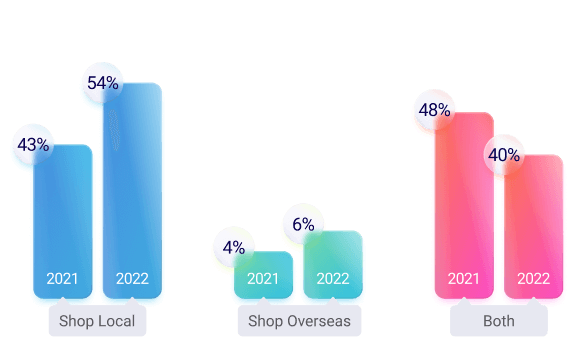In 2020, the travel and airline industry took an obvious hit. Aside from road trips, consumers weren’t going anywhere. Instead, while they were stuck at home already, consumers began making their homes a destination worth visiting. Suddenly, they had time for all the potential home improvement projects they had been putting off. The inspiration to renovate and redecorate made the home goods industry a big winner.
In 2021, when customers realized they would need to occupy themselves for a longer period of time than just a few months, the consumer electronics industry started to gain steam. We also saw novice ecommerce consumers leaning toward smaller-value apparel and accessories, where experienced online shoppers felt more comfortable buying big-ticket items like mattresses and sofas.
Those trends have continued – with a few changes. Today’s consumers no longer have the stimulus checks and forgiveness loans they used in the last few years for non-essential purchases. That, combined with general concern about the economy, has caused consumer financial belts to tighten.
Does that mean trouble for ecommerce businesses? Not necessarily.
“The businesses that will fare the best in this new era of ecommerce are the ones that were online long before the pandemic and the ‘pure players’ that only sell online.”
Rafael Lourenco, ClearSale Executive Vice President & Partner
A good example of this is the ticketing and event industry. Our ecommerce experts anticipate that this will become a top industry in the next year or two. Why?
The industry has almost completely transitioned online. Think about the last time you bought a ticket from a physical box office. Another factor is that consumers are now fully able to return to live venues where they can enjoy concerts, festivals and other events – which has become incredibly popular over the last year. Lastly, the cost of concert tickets has increased, which is boosting revenues in those industries.
Even ticketing businesses that weren’t “pure players” before will be set up to succeed.
We’ve seen even more trends emerge in the last few years.




